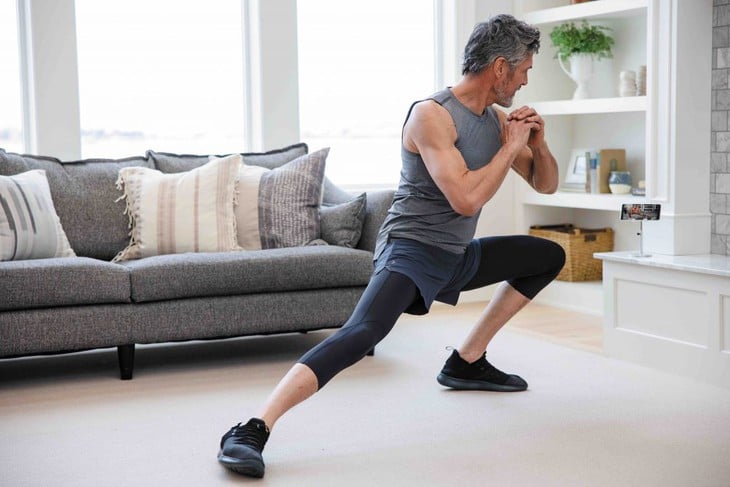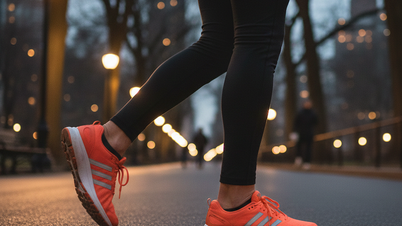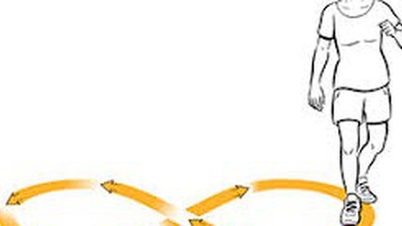
Many people are prone to sideburns - Photo: CP
Hip sprains are sudden pains that force exercisers to slow down or stop their workouts altogether. Although common, not everyone understands why hip sprains occur and how to avoid them.
Why are many people prone to sideburns?
According to sports medicine and rehabilitation professor Darren Morton (University of Avondale, Australia), side stitches can result from spasms of the diaphragm – a muscle involved in breathing.
During strenuous exercise, oxygen demand increases, and the diaphragm works harder. If breathing is rapid, shallow, or irregular, the diaphragm can become overloaded and cause pain. This is why side stitches often occur in beginners or those who suddenly increase their speed.
In addition, eating or drinking too close to exercise time is also a very common cause. When you eat a large meal, especially fatty food, or drink a lot of water at the same time, your stomach becomes full and puts pressure on your diaphragm.
According to sports nutritionist Elizabeth Quinn (USA): "Food needs blood to digest, while the diaphragm and muscles also need blood during exercise. Competition for blood flow can make the diaphragm less efficient and cause side stitches."
The next factor is insufficient warm-up. If you start strenuous exercise without warming up your abdominal muscles, intercostal muscles, and diaphragm, the muscle fibers are prone to sudden contractions. This explains why hip sprains often occur at the beginning of a workout, especially in people who tend to "go straight to the main exercise."
Posture is also important to consider. When running, bending over, taking excessively long strides, or having an unbalanced arm-breathing rhythm, the body shakes excessively, putting pressure on the lower abdomen.

There are many reasons for side stitching - Photo: TA
According to running coach Tom Schwartz (USA): "Keeping the upper body stable reduces unnecessary movement and significantly lowers the risk of hip shock."
Finally, weak abdominal and hip muscles are a common cause of hip sprains. This muscle group (called the core) is responsible for keeping the body stable during movement. When they are weak, the diaphragm and intercostal muscles have to bear more of the burden, making them more prone to spasms and pain.
Effective ways to remedy and prevent it.
To minimize hip pain, it's essential to eat properly before exercise. Sports nutritionist Nancy Clark recommends eating a moderate amount 1.5-2 hours before exercise, avoiding large amounts of water at once, and instead taking small sips during exercise.
Secondly, warm up for at least 5-10 minutes, which can include brisk walking, hip rotations, abdominal and oblique stretching, and deep breathing exercises. Warming up increases blood flow to the muscle groups, helping the diaphragm adapt better.

There are exercises that can help you improve hip sprain problems - Photo: CN
Third, maintain proper posture while running: keep your back straight, shoulders open, chest out, and avoid slouching while running. Inhale slowly and deeply through your nose, exhale evenly through your mouth, and synchronize your breathing with your stride (for example, inhale for two steps, exhale for two steps).
Additionally, strengthening your abdominal and hip muscles with planks or core exercises for 10-15 minutes each day will help stabilize your body, significantly reducing the risk of hip sprains in the long term.
When hip pain occurs during a workout, slow down or switch to walking, place your hand on the painful area and gently massage it while breathing deeply and slowly, and slightly bending forward. In most cases, the pain will subside within a few minutes.
Source: https://tuoitre.vn/vi-sao-ban-hay-bi-xoc-hong-khi-tap-the-duc-20251024202606229.htm







![[Photo] Prime Minister Pham Minh Chinh holds a phone call with the CEO of Russia's Rosatom Corporation.](/_next/image?url=https%3A%2F%2Fvphoto.vietnam.vn%2Fthumb%2F1200x675%2Fvietnam%2Fresource%2FIMAGE%2F2025%2F12%2F11%2F1765464552365_dsc-5295-jpg.webp&w=3840&q=75)






































































































Comment (0)